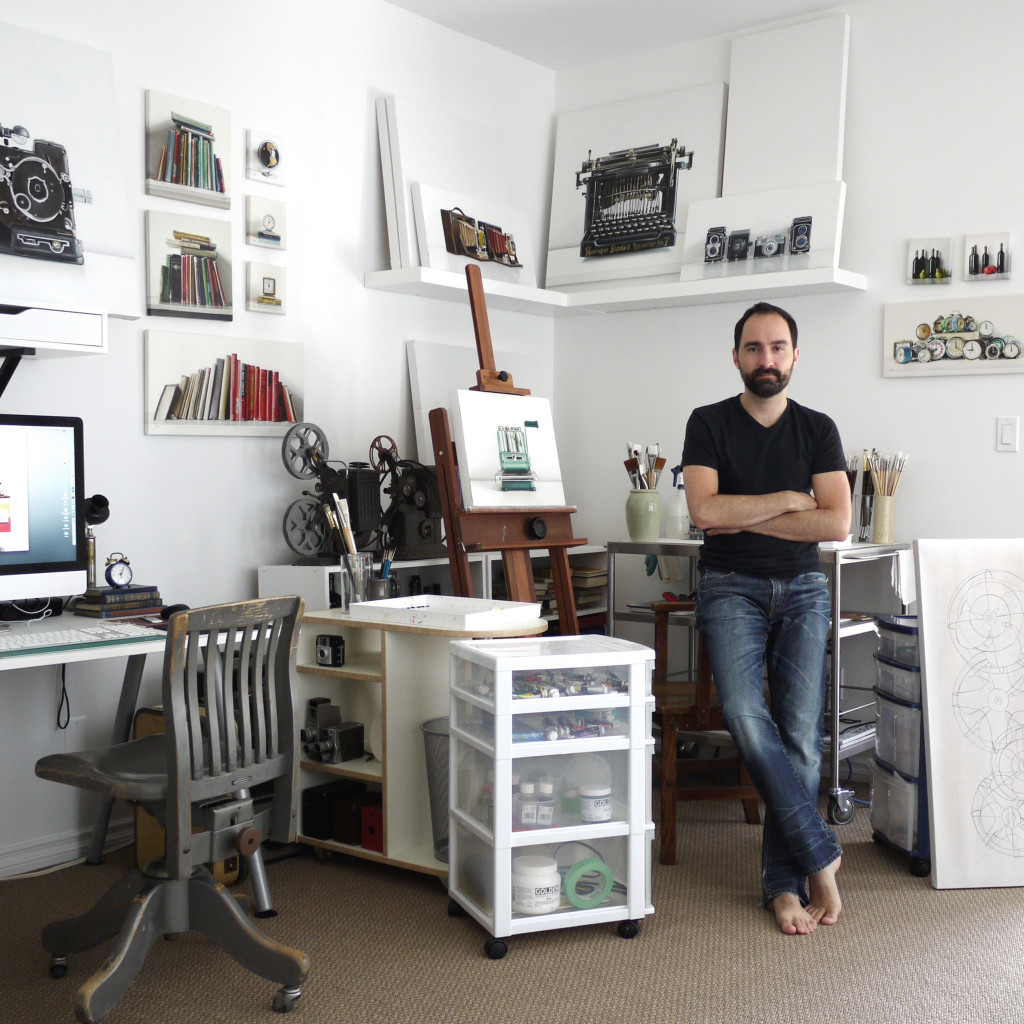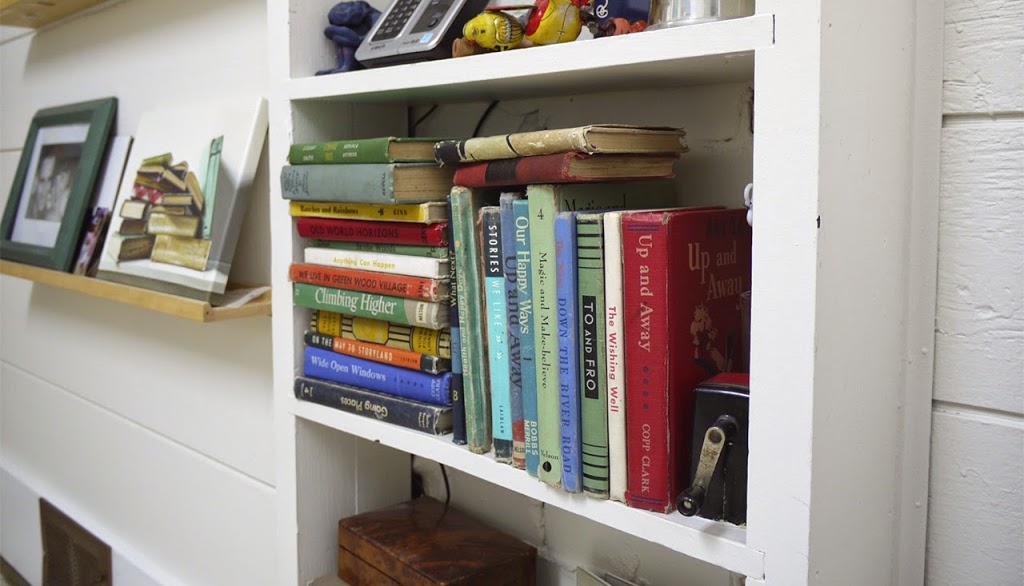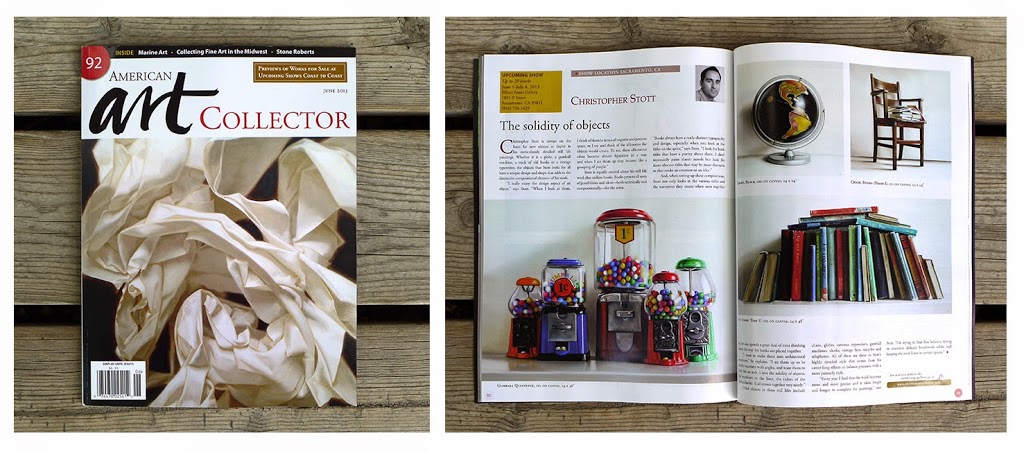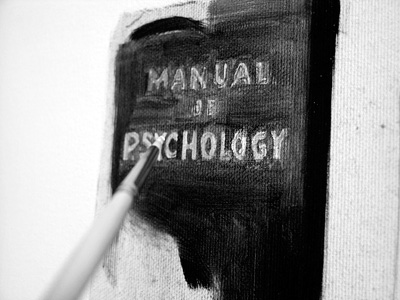In October 2020 I was invited to write a guest post on Realism Today’s website. I thought I’d share the article here.
Contemporary Realism Still Life: More Than Just Collector’s Items
Throughout the course of my painting career, I have consciously drawn influence from a broad range of arts and culture and from various disciplines beyond traditional representational painting, and it was an honour to have the editors of Aesthetica Magazine pick up on my paintings and see how they would converge with the other work in the exhibition that included large scale photography, contemporary sculpture, mechanical installations and sound and video projections.
All of my subjects are chosen with an intention to draw connections from the earliest still life paintings in the Western tradition to the current way objects are presented in various mediums. Beginning in the Middle Ages, through the Early Renaissance and on through the Dutch Golden Age of painting the painters were all influenced by the physical world around them. The aesthetic they created was directly a result of the space they were in. Their world was illuminated by small windows and candlelight. And thus, it was low key, the chiaroscuro that we have come to know and love and shaped the world of realist painting.
However, in my studio, I am surrounded by five very large windows and high ceilings and I only work by natural light — my world is high key, bright and well lit. My paintings are a response to the physical world I am in, giving them an aesthetic that is the result of my space.
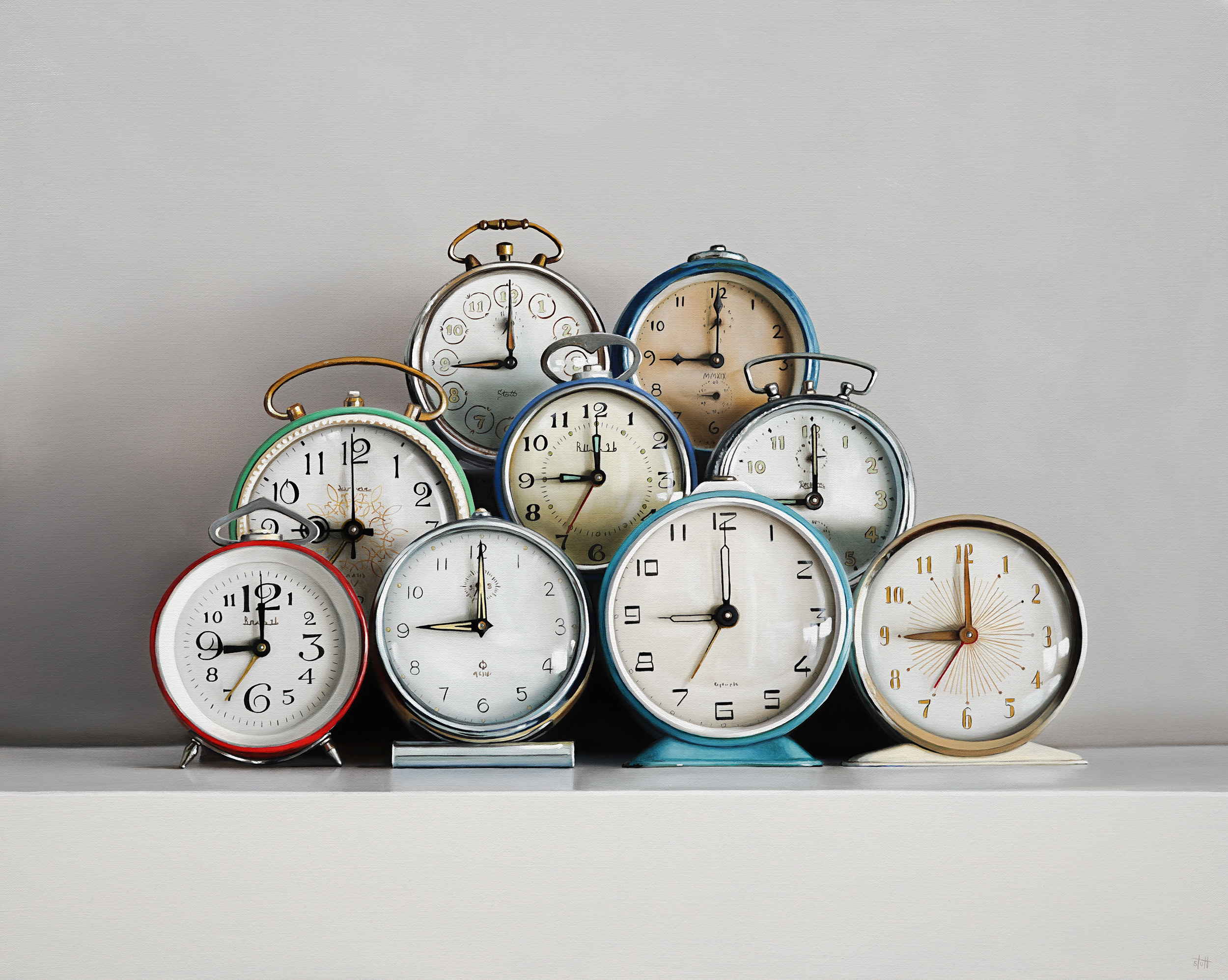
Presented like artifacts, I compose my subjects with strict symmetry and balance. Multiple clocks and cameras drive the repetition of shapes and graphic design, but also the theme that underlies my intentions behind my paintings. Middle Ages and Early Renaissance still life were full of religious symbolism, each subject carrying meaning, and were easily interpreted and understood by scholars of the time.
The clocks I paint are more than just collector’s items; they are akin to the symbols of ephemera in Dutch vanitas paintings — which were presented with several dark and foreboding warnings to viewers. Rather than rotting fruit, wilting flowers and human skulls, and the overabundance of jumbled objects on a table I display the clocks on a clean white shelf, hoping the simplified presentation of recurring forms locks the viewer in for a time of observation.
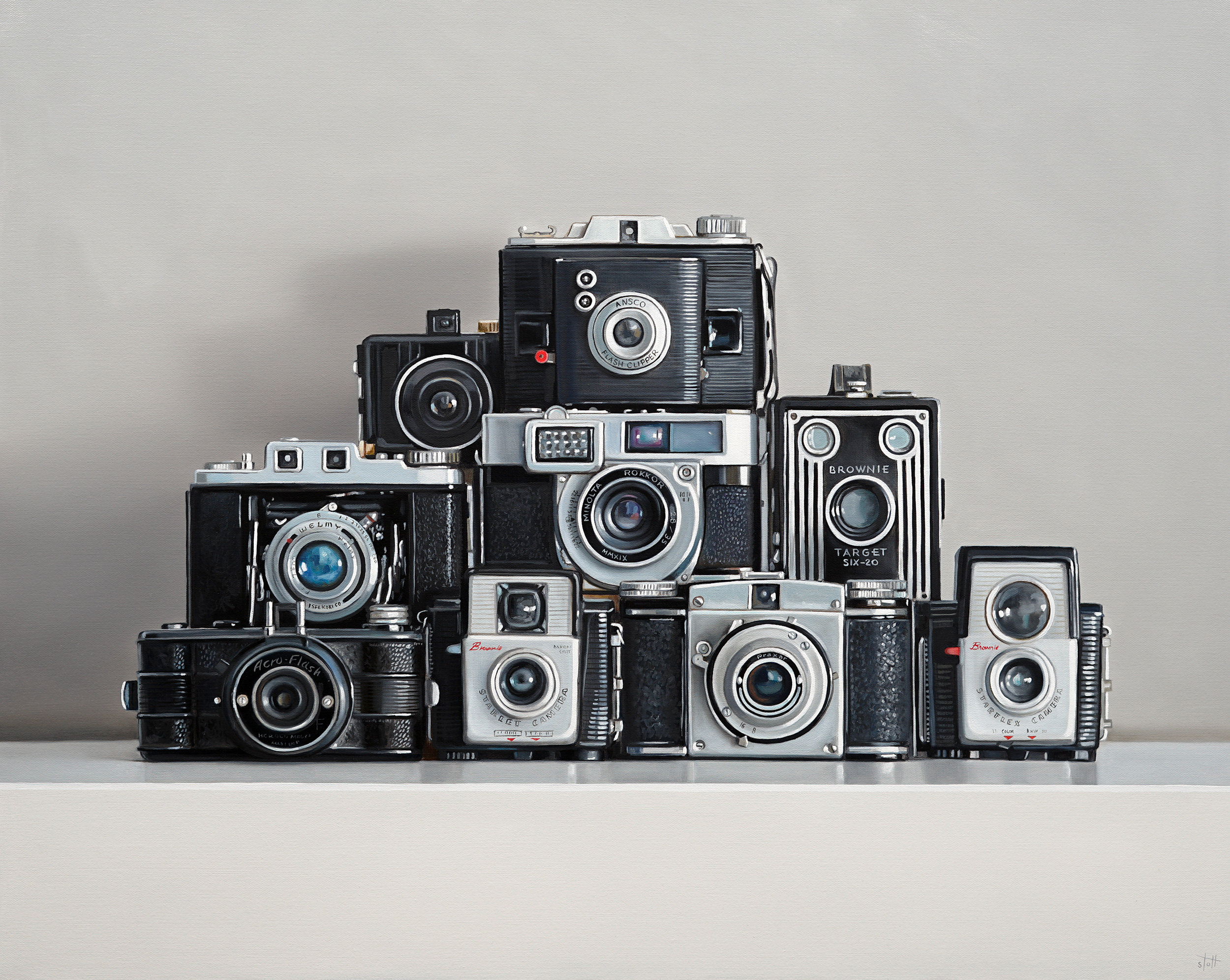
Likewise, the cluster of cameras has a multitude of tiny details and numerous lenses focused on the viewer. The cameras are all collected from vintage and antique shops. I always find myself feeling melancholic when I find a camera to use as a subject and think of the fifty years that have passed since the camera was bought new and taken on vacations, brought out during holidays or family gatherings. And I am left wondering about the cameras we keep in our pockets. Four people together can now have a dozen camera lenses with them, many of them pointed at themselves recording staged and filtered lives. Will the phones and cameras in our pockets come across as charming and enduring fifty years from now? Will scrolling through fifty years of someone’s Instagram feed be a modern-day lesson on the transience of youth, beauty, and life in general?
My three paintings were shown alongside several video and sound installations by artists from around the world. One of the artists even uses vintage 16mm film cameras to capture her images. After being processed the images are projected digitally. And so my painting of an eighty-five-year-old 16mm film projector as an artifact fit right in with the other work.
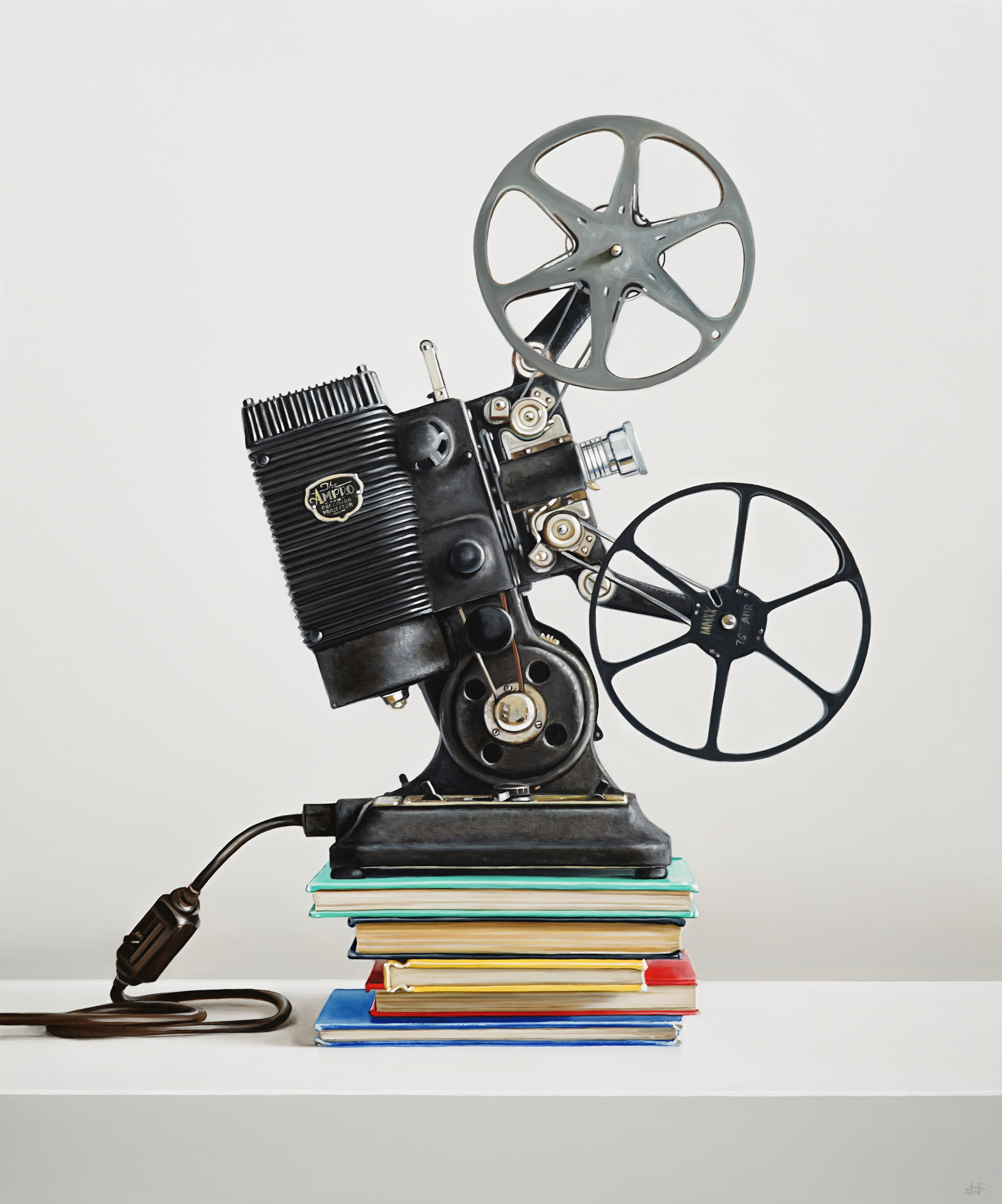
I was left to wonder about all the technical aspects of the various works in the exhibition. How would they fare over time when the equipment used to show them becomes obsolete? What is the legacy of art that cannot be seen or experienced? It was not lost on me that around the corner from our work, in another gallery space, there were four-hundred-year-old paintings heeding warnings and telling stories.
With these three paintings, I reach into the past to look into the future. Simple, straightforward compositions showcasing familiar yet useless objects bring the themes of the fleeting nature of life, the warnings of our vanity and the inevitably of obsolescence.
I was asked at the reception for the exhibition why I wouldn’t just take photos of the objects instead of painting them. The answer is simple. The process of painting connects me to the artists of the past and makes me understand their objectives. The long, slow, arduous process of painting is a meditative practice and allows me to travel on the bridge from that past to think about what the future may bring.
